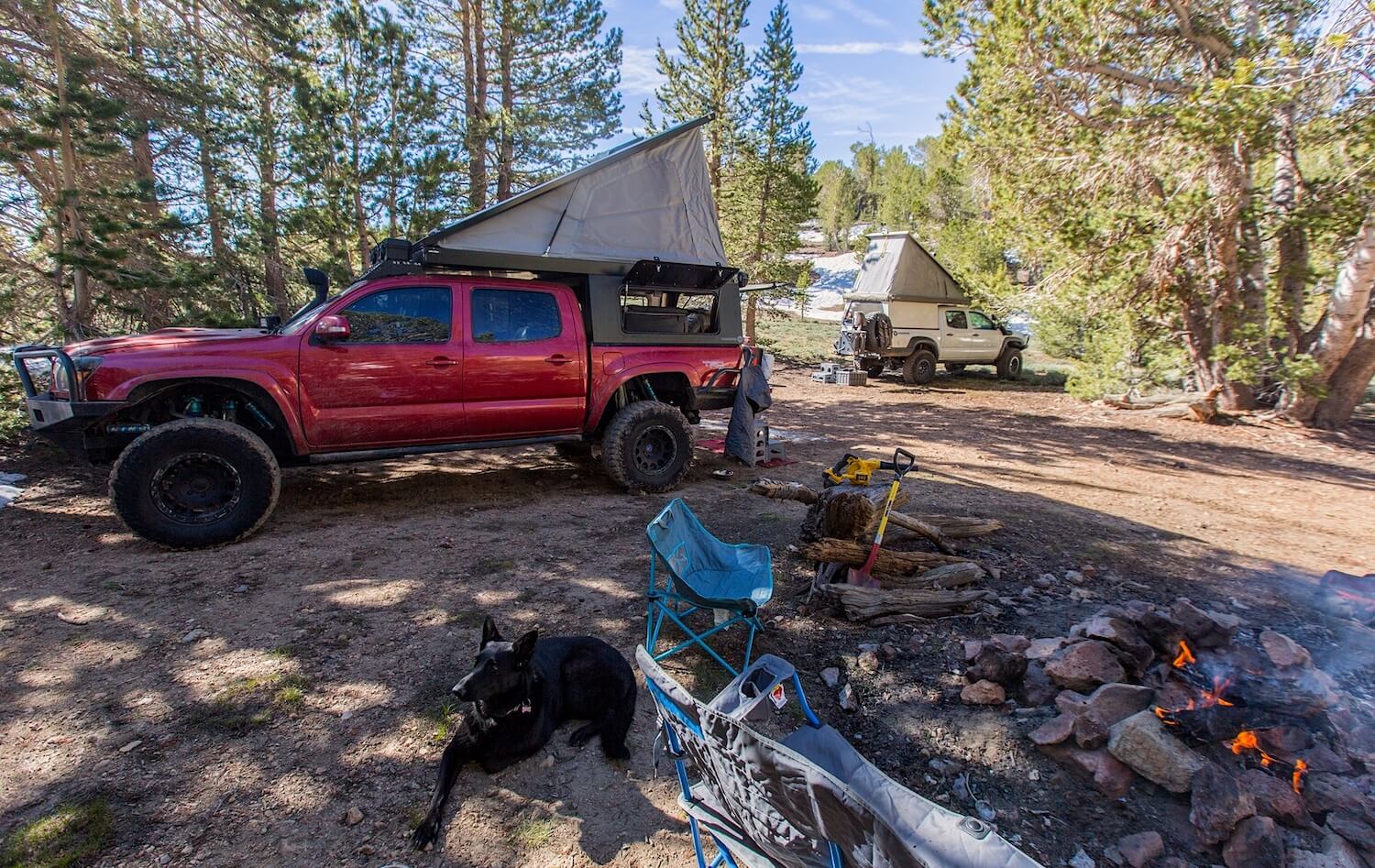
Photography by Harry Wagner
Overlanding is the hottest thing in the off-road community, and it should come as no surprise. Rather than leaving your wife and kids at home while you smash your Jeep and break parts rock crawling through the hardest trails you can find, the entire family can enjoy the beauty and splendor of the outdoors when you go overlanding.
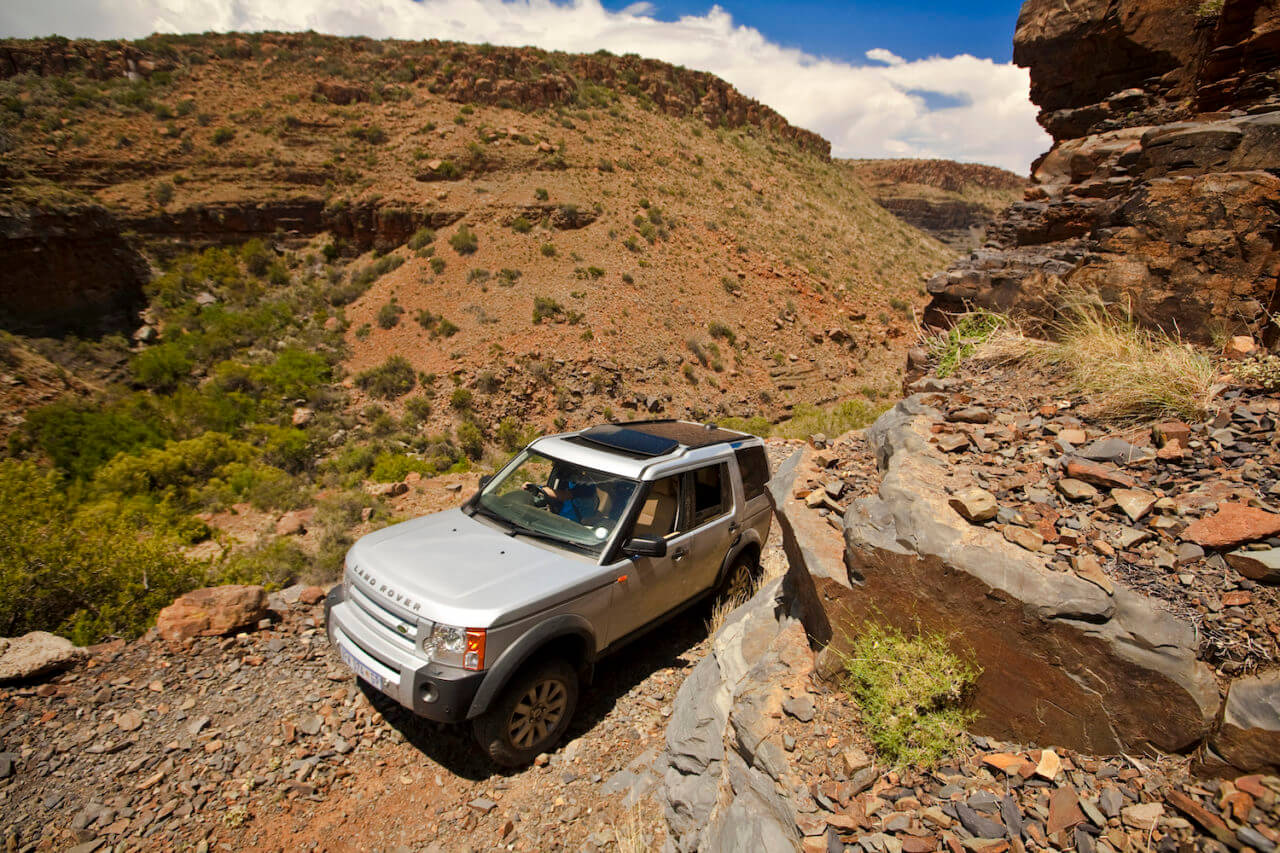
Overlanding can be defined as self-sufficient travel to remote destinations where the journey is as important as the destination. And it can be done in the same vehicle that you drive every day; you don’t need lockers and coilover shocks to explore remote corners of the world. That isn’t to say that a stock vehicle is the best choice for overlanding, but don’t think that a roof top tent and traction boards are required before you can leave the house. Modifications should maximize reliability and durability while minimizing compromises.

Overlanding is more about exploration than conquering obstacles. While the trails might be challenging, that’s more of a byproduct than the goal. The point is to see and learn about our world, whether on a weekend trip near home or a round-the-world journey that takes years to complete. Culture, history, nature, scenery, and solitude are the rewards of overland travel.
History of Overlanding
Overlanding was around for nearly a century before it became popular in the United States. The origins date back to Australia in the early 20th century when routes were being established in the country for moving livestock, including the famous Canning Stock Route, named after early pioneer Alfred Canning. Today, urban residents of Melbourne and Perth recreate these routes through the remote Australian Outback, but they aren’t driving livestock or traveling by wagon. Instead, they are driving SUVs equipped with a variety of gear from camp kitchens to off-road trailers to make the trip more comfortable. South Africa is another cradle of overlanding, where RV parks and interstate highways are not commonplace. Instead of RVs, people drive pickups equipped with fridges and roof top tents that allow them to camp comfortably for days and weeks at a time.
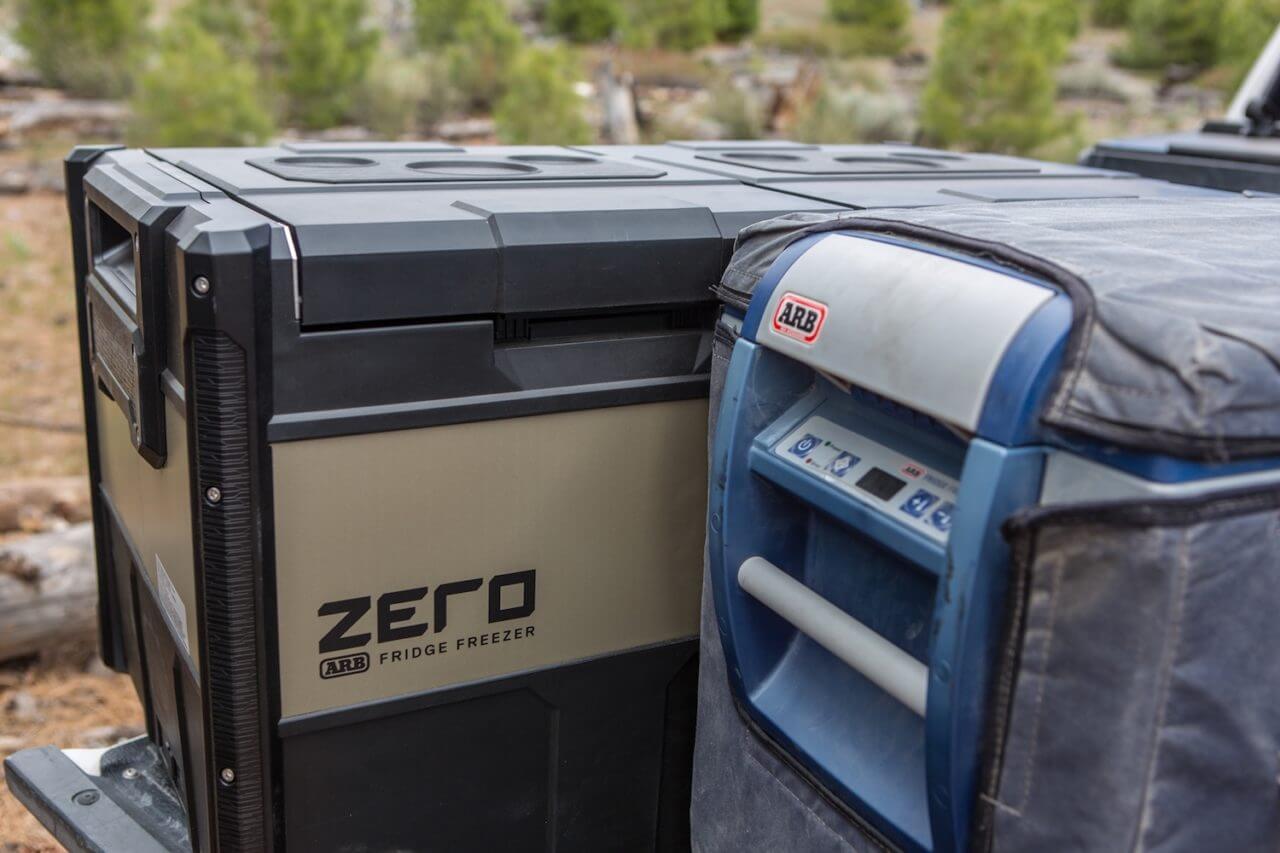
At first you might have sticker shock when shopping for a fridge/freezer, as the cost can be several times that of a standard cooler. What you gain over the plastic ice chest from your local sporting goods store makes it all worthwhile though, this is an example of getting what you pay for. Fridge/freezers like ARB’s Zero and Classic fridges don’t require ice, so they stay cool as long as they have power and make soggy sandwiches and warm drinks a thing of the past.
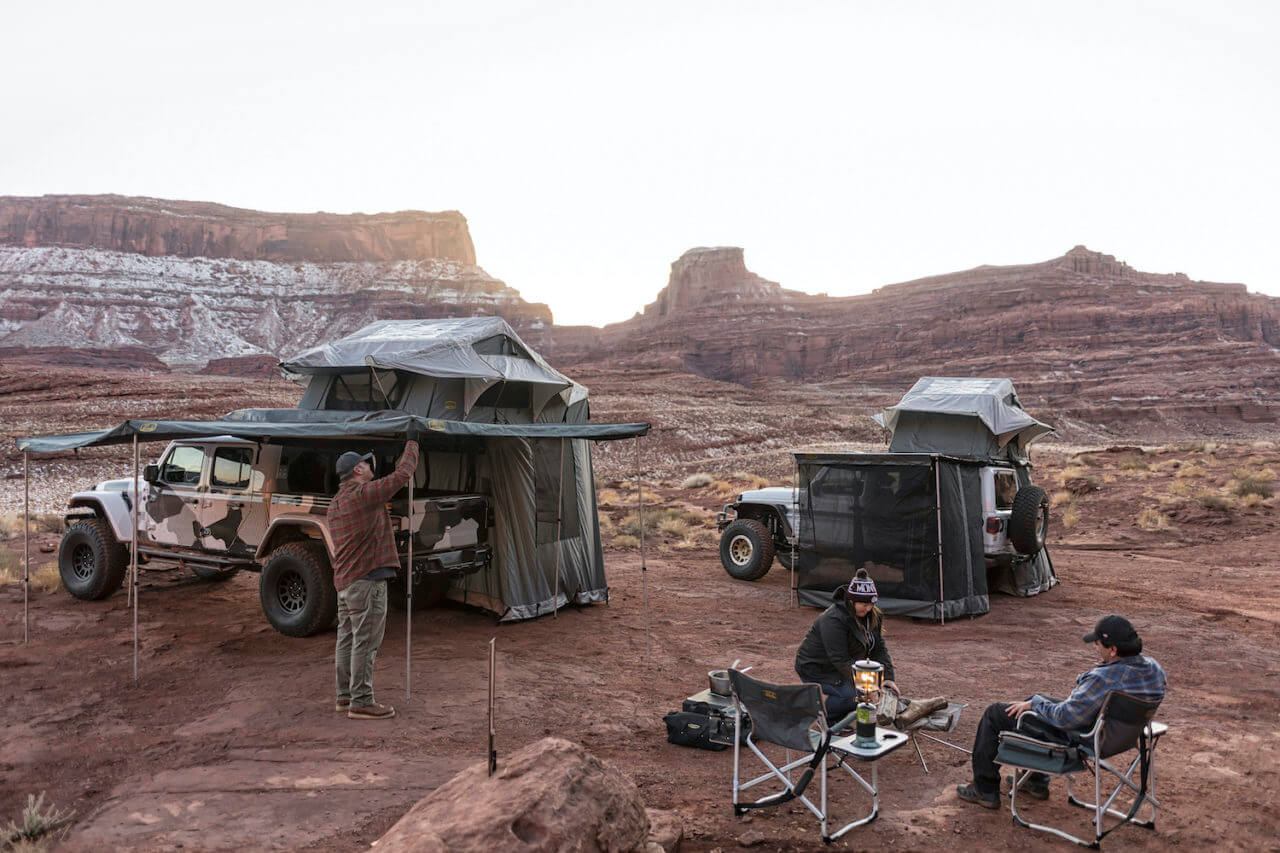
Gear for Overlanding
You don’t need to take much when you just go wheeling for the day, but when you are spending multiple nights in the backcountry comfort becomes a priority. The two items that best represent the “overlanding” movement are roof top tents and fridge/freezers. As their name implies, roof top tents mount on the roof of your vehicle, or over the bed of your pickup truck. They come in two basic flavors; soft sided and hard shell. Both styles provide an elevated sleeping surface away from dirt and animals and contain all of your bedding inside the tent to allow you to set up camp in minutes. The soft sided tents fold in half and are typically protected by a weatherproof cover. They are easy to set up, but more difficult to pack away, particularly when located several feet off the ground. You also cannot move your vehicle once the tent is deployed.
Other popular overland products are roof racks, solar panels, dual batteries, recovery boards, and off-road trailers. Roof racks can be used to mount a tent, store items like fuel cans that you would not want inside the cargo compartment, or for a variety of other purposes. Overlanding involves being away from home for days or weeks at a time, so power is always a concern. Battery isolators, solar panels, and dual batteries are valuable to power items including fridges, tablets, HAM radios, and other electronic devices. Recovery boards such as ARB’s TRED help get you get unstuck in sand and soft terrain where there may be nothing to winch to for miles around.
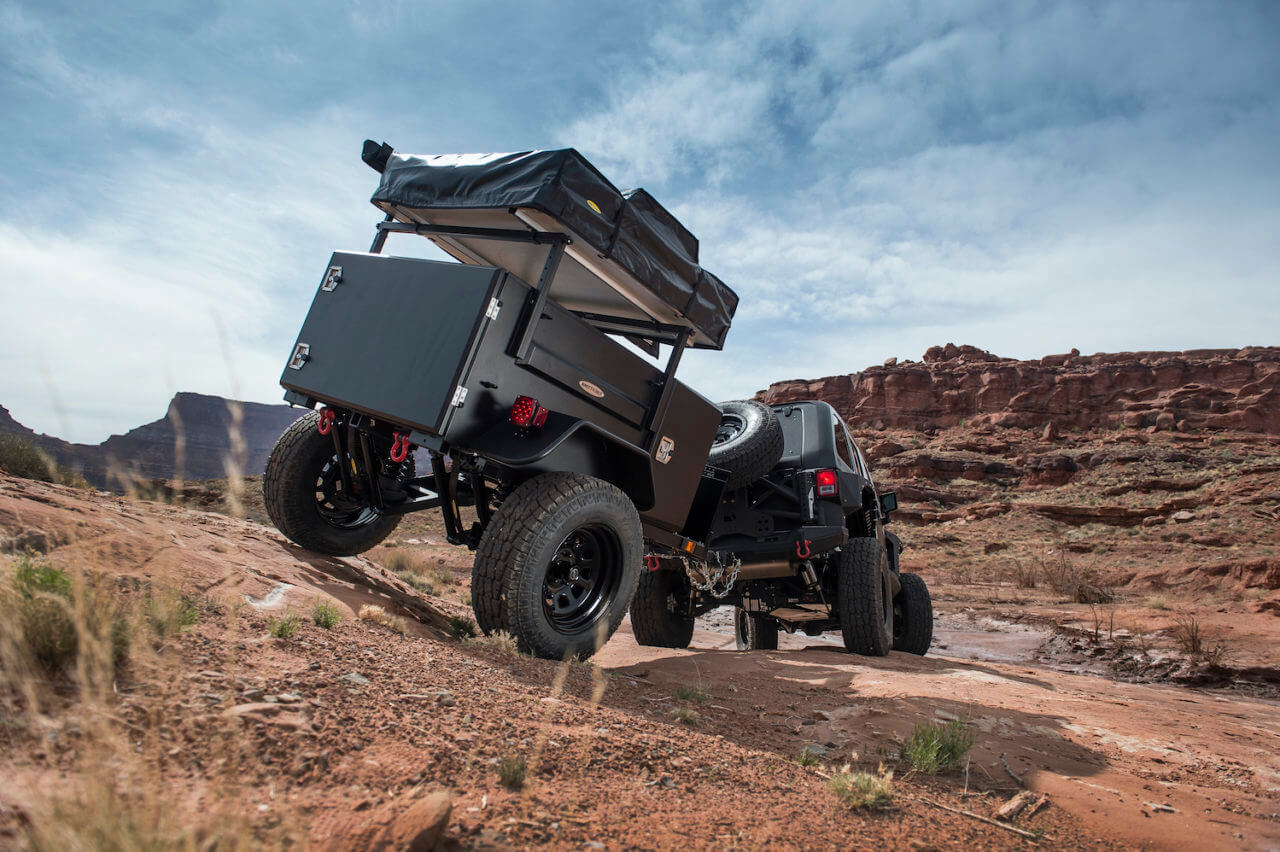
Don’t have room for all of these items? That is where the off-road trailer comes into the equation! A family of four can fit comfortably in a Double Cab Tacoma or four-door Jeep Wrangler right up until the point you try to find a spot for all of their personal belongings, food, and gear for a week-long trip.
There are plenty of traditional off-road products that lend themselves to overland use as well. Sturdy LT-rated tires, locking differentials, winches, and upgraded suspension are all useful for backcountry exploring. Many stock vehicles come with P-Metric tires from the factory to improve fuel economy, but that won’t do you much good if you get a flat tire in the middle of nowhere. The tires don’t need to be too aggressive, all-terrains are perfectly adequate for most overlanding. Similarly, the suspension should not be lifted excessively, but just enough to improve ground clearance and hopefully ride quality as well.
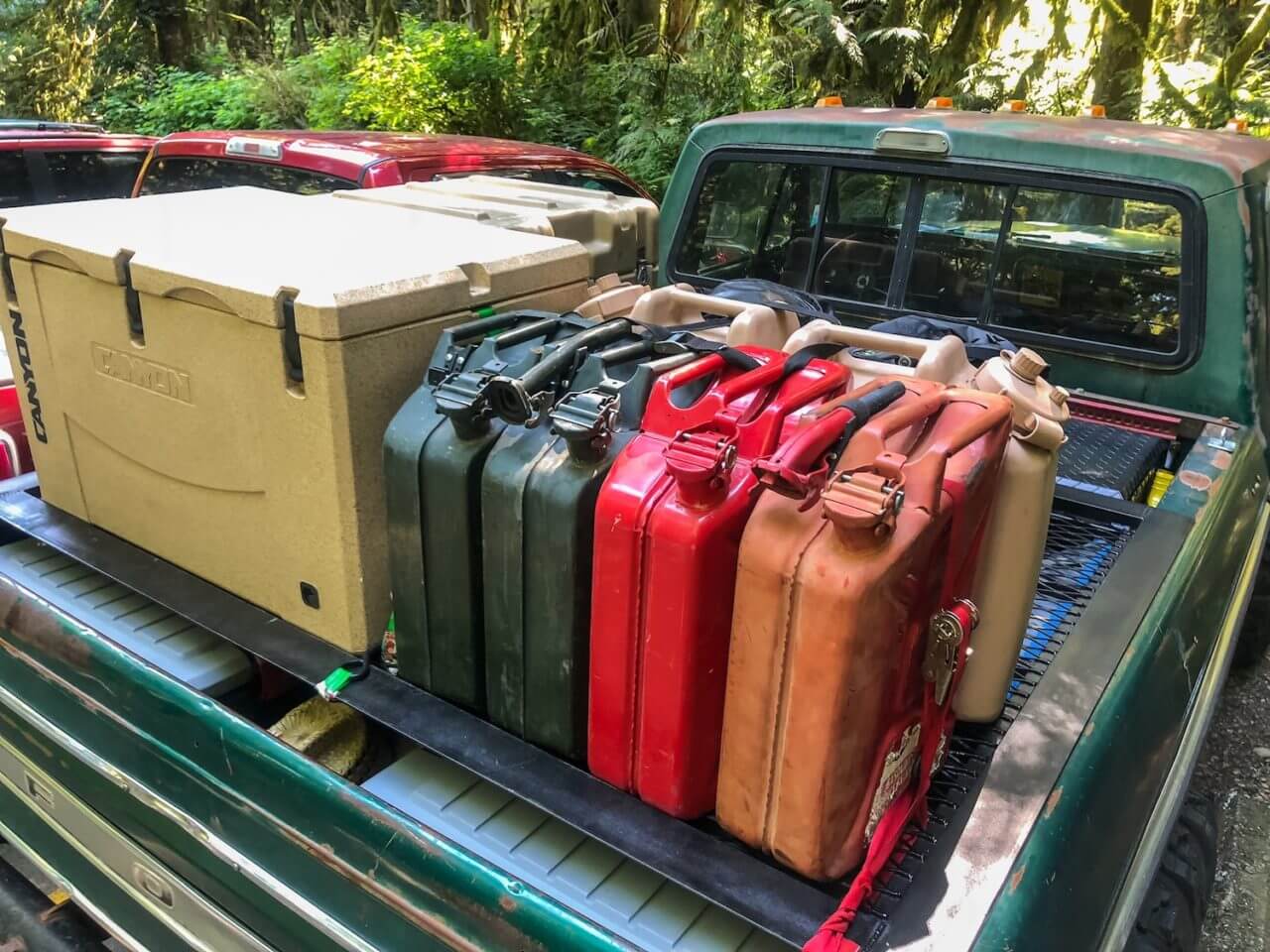
One trap we see people fall into is thinking that they need all the latest and greatest gear to go overlanding. Your setup can be simple or extravagant; remember that the vehicle is simply a means to an end. The important part is to get out and explore, the more you do this the more obvious it will be what you need to bring on the next trip to be more prepared.
Why Does Overlanding Get A Bad Rap?
Rock Crawlers often criticize overlanders for not being “true” off-roaders because they don’t go searching for the most difficult obstacles and break axle shafts. If you take a step back though, does it really make sense to spend all day to travel three miles and dent up your Jeep? Some people enjoy the challenge though, whether it makes sense or not. Overlanding is no different. The terms “overland” and “expedition” get used these days for everything from SEMA show vehicles to Subaru’s with roof top tents.
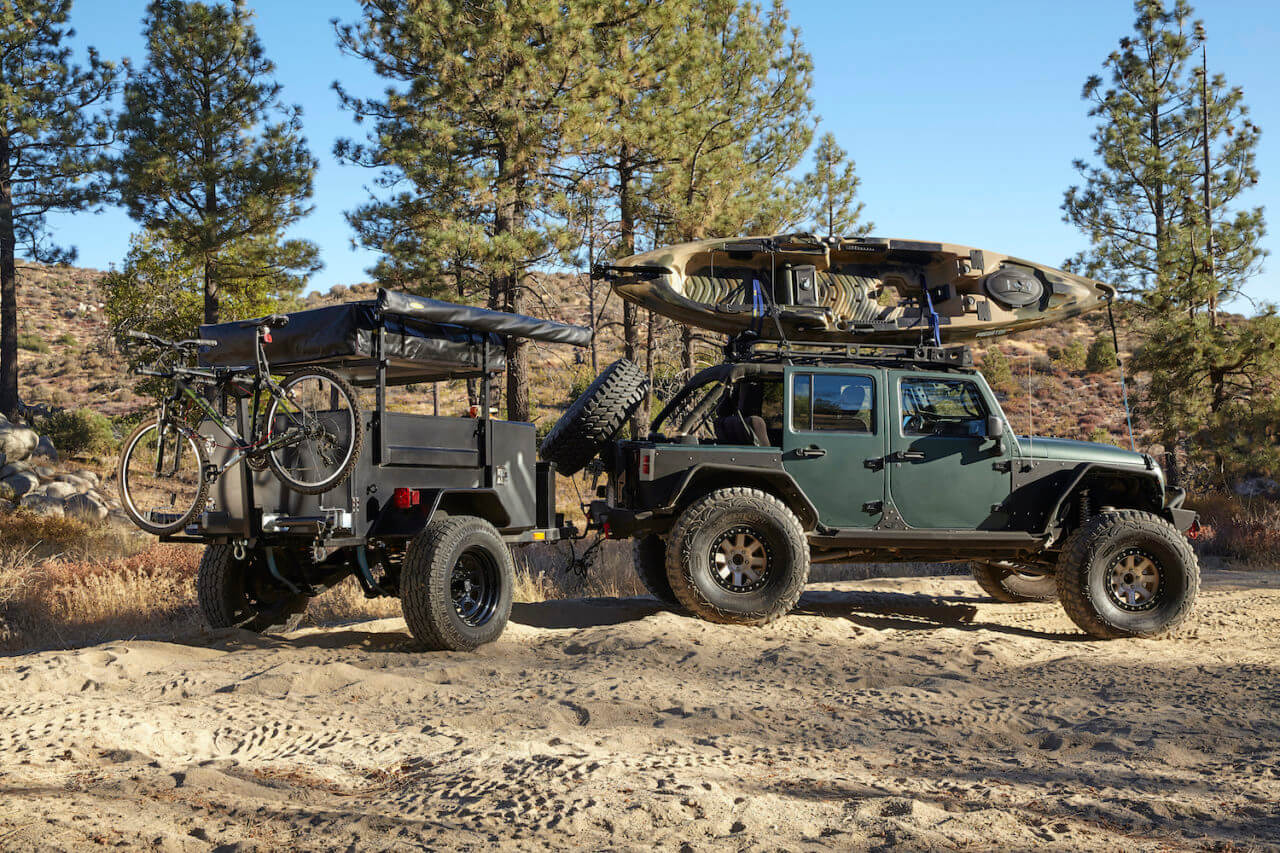
These vehicles are typically heavily accessorized with sand ladders hanging off the sides, tents on top, fuel cans, and trailers to the point that they become a mockery. You don’t need all of those things to get out of town, but you shouldn’t be judged for having them either. An expedition is defined as a journey with a purpose, such as the search for scientific knowledge. Most of us aren’t going on expeditions. And honestly most of us aren’t going overlanding as it was first defined, driving livestock across the inhospitable interior of Australia. The term has now been applied to everything up to and including weekend camping trips, and that is the current popular definition of overlanding in the United States. There are few places in the US where you can drive for days on end without cities, paved roads, and cell service though. Don’t let that stop you from getting out and exploring though.
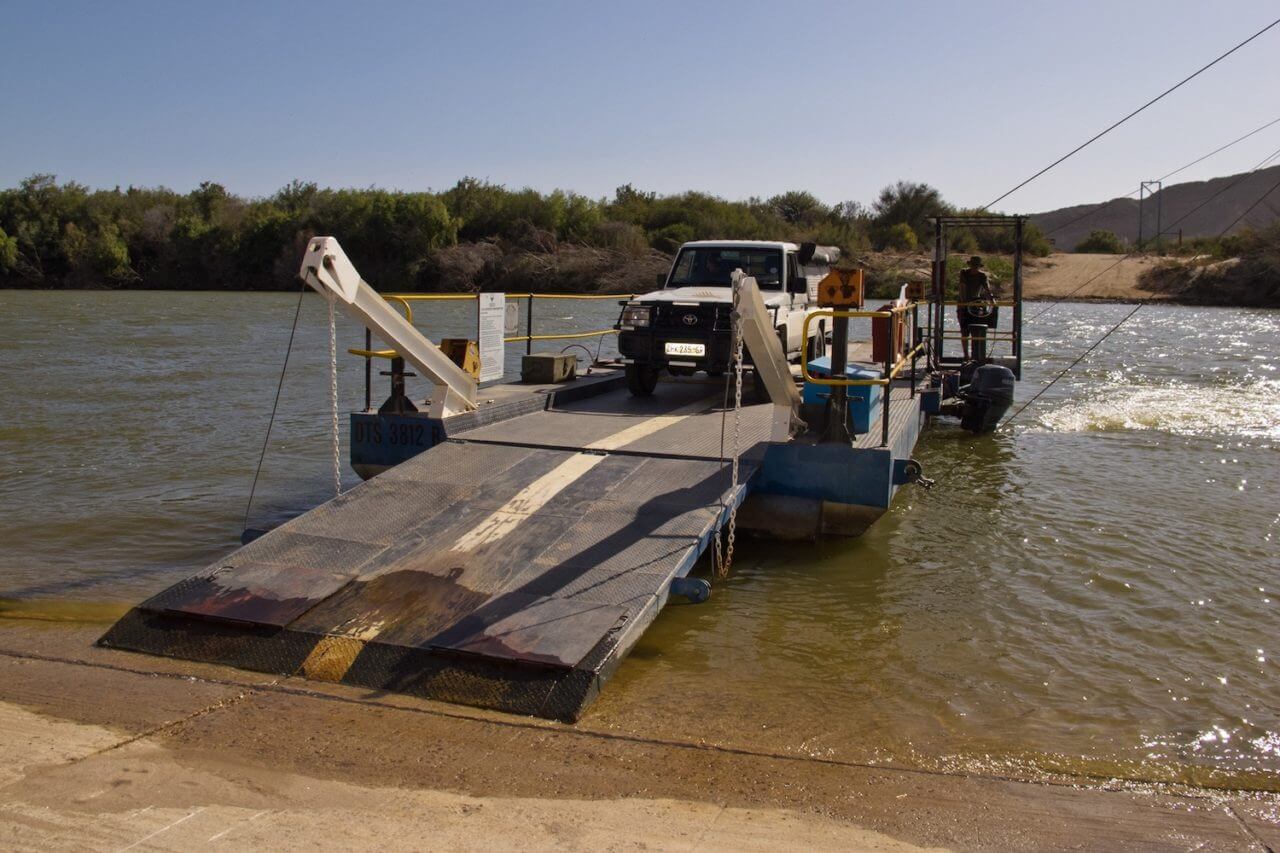
Traveling in unfamiliar territory requires a properly equipped vehicle, but an overlanding rig is just a means to an end. The vehicle helps you reach your destination, and the items you bring should be prioritized to making sure you are safe and comfortable. Remember water, a first aid kit, fire extinguisher, and shade from the sun.
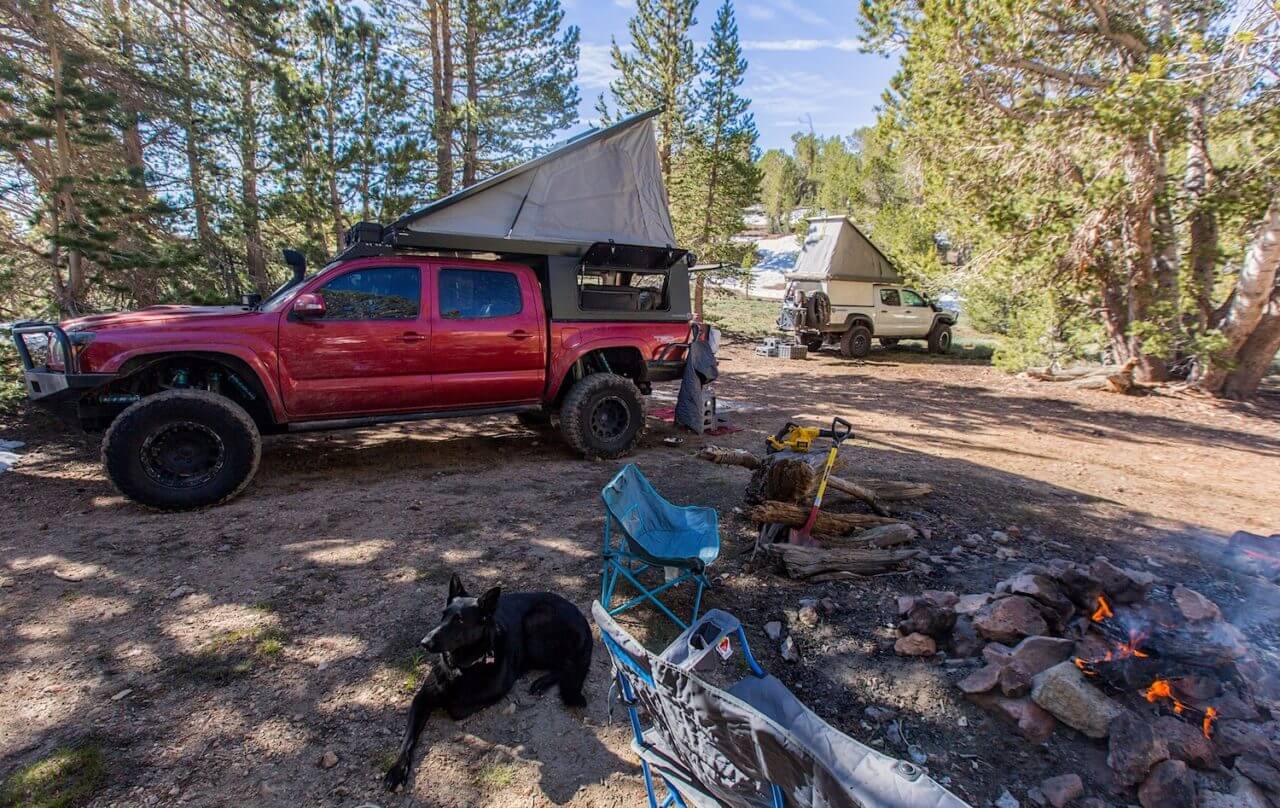
While Land Rovers and Land Cruisers conjure up images of the African Sahara, Toyota Tacomas are the most popular overland platform in the US and benefit from plenty of aftermarket support. Since you will likely be driving long distances, we recommend keeping the modifications, particularly lift height and tire size, on the modest size. This will also ensure that your Tacoma remains a practical daily driver.
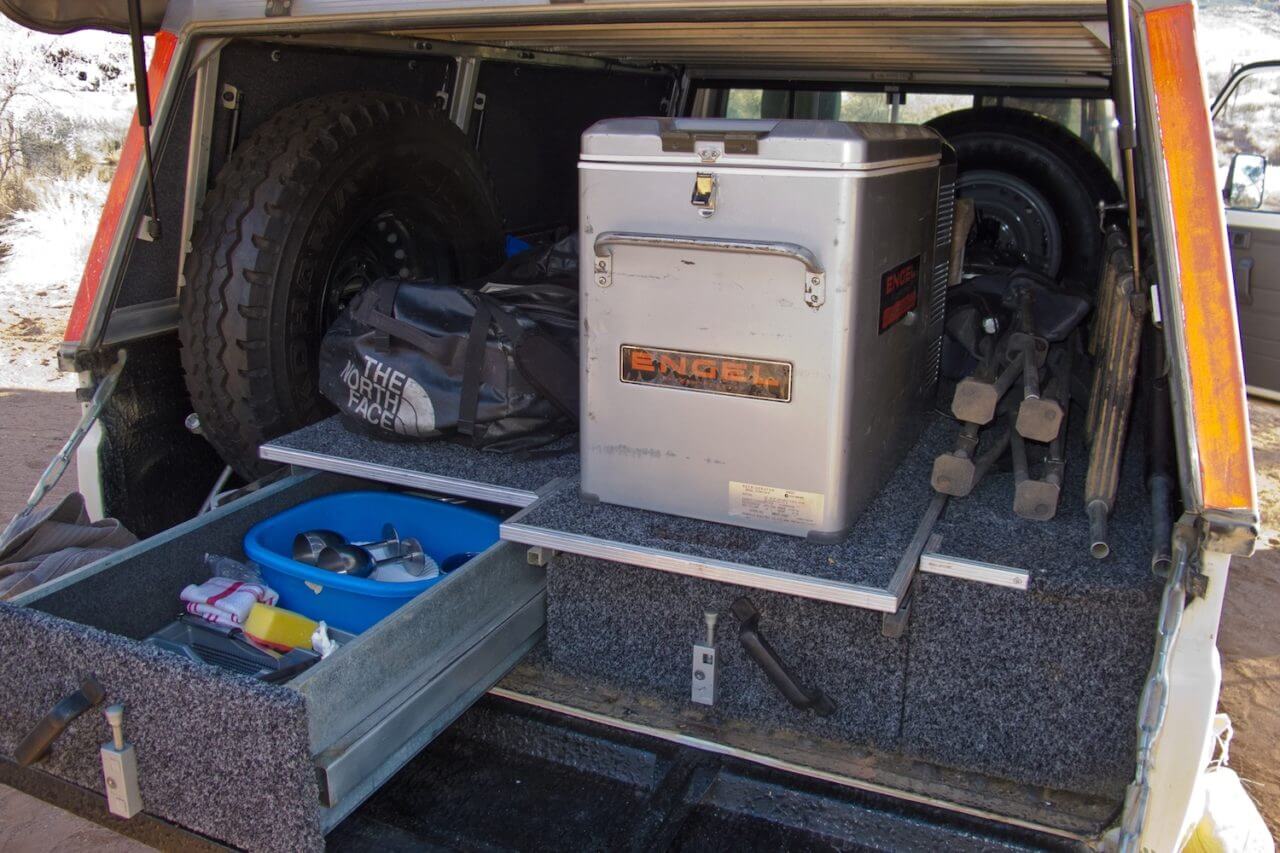
Proper storage of gear is important when you are covering hundreds of miles of washboard road. Note how this truck has a drawer system in the back along with a slide that allows easier access to the fridge/freezer. This not only keeps gear secure, but also organized so it is easy to find what you need when you get to camp.
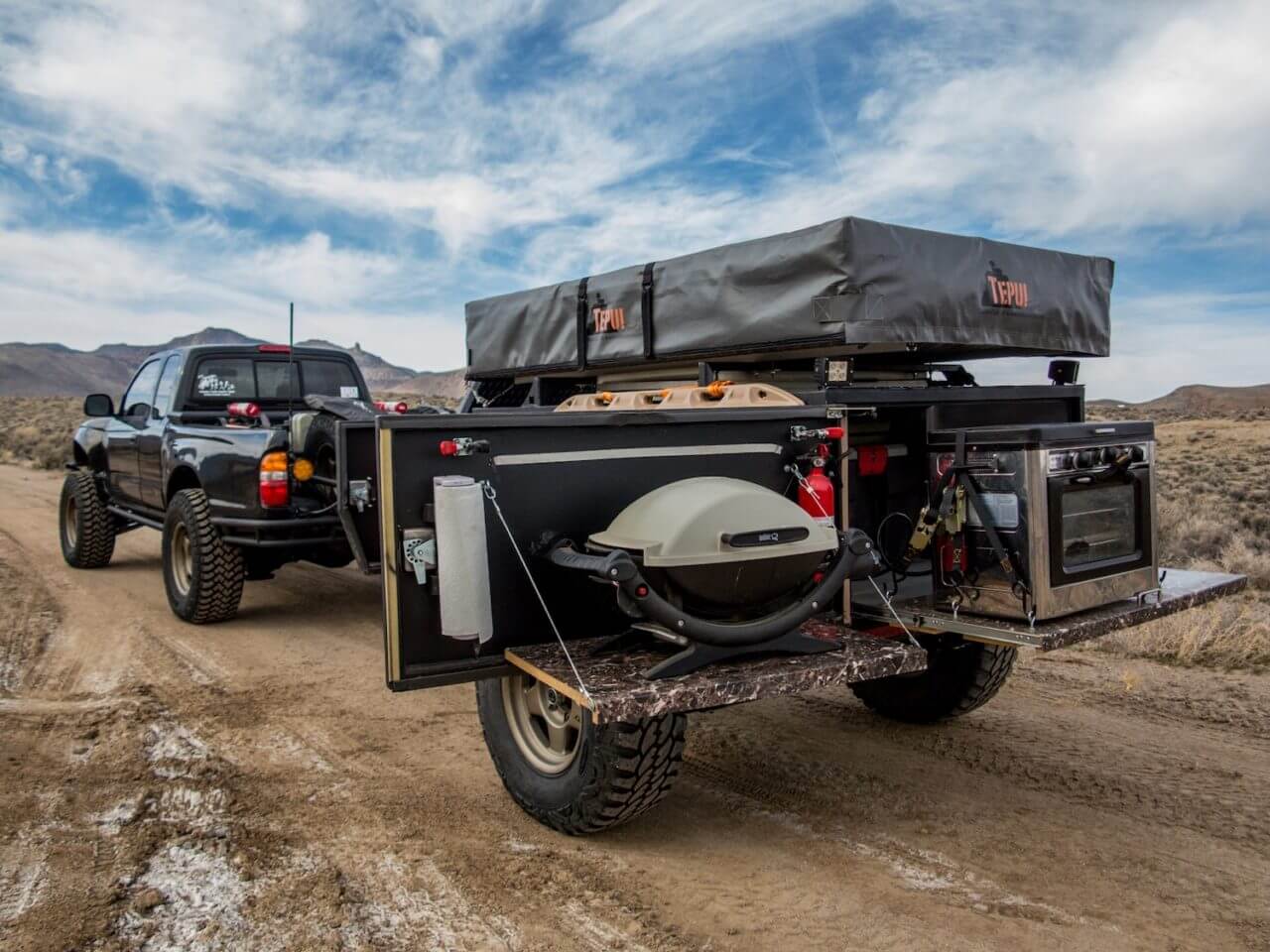
Off-road trailers are a popular option that allow you to bring more gear, but they are not inexpensive. The benefit of a trailer is that you can have a smaller vehicle that you drive every day and just hook up the trailer when you want to get out of town. They do limit where you can go off-road though and are particularly tricky to back up.
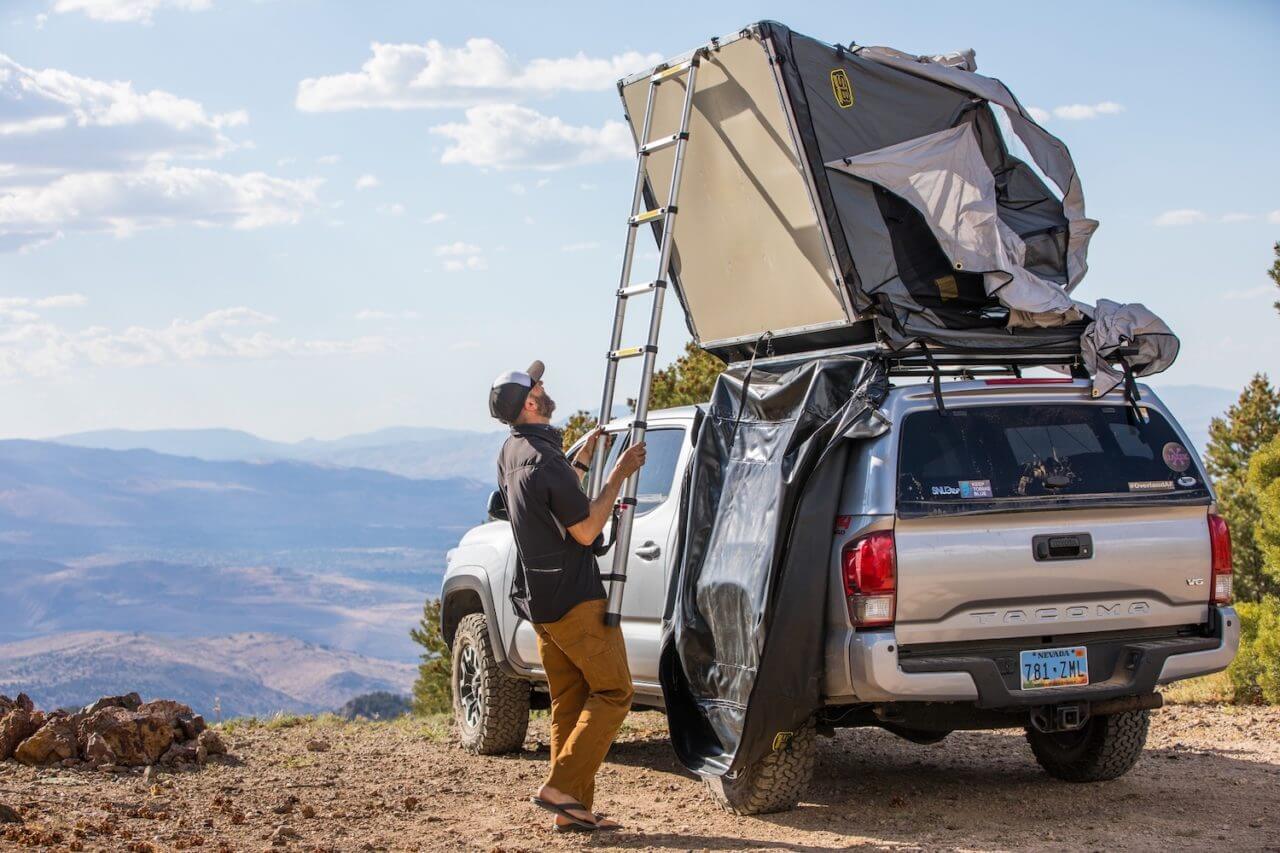
We can endure sleeping on the rocky ground with a fleece blanket for a night or two, but if you plan to spend any significant time in the backcountry, comfy sleeping quarters is a must. Roof top tents, such as Smittybilt’s Overlander Tent, are a great option for SUVs and trucks. These tents come complete with padding and enough room to store your sleeping bags and camp pillows. The one downside to a roof top tent is that the vehicle cannot be moved when they are deployed, so some travelers set up their tent on a trailer and then drop the trailer at a central camp and explore for the day in their vehicle.










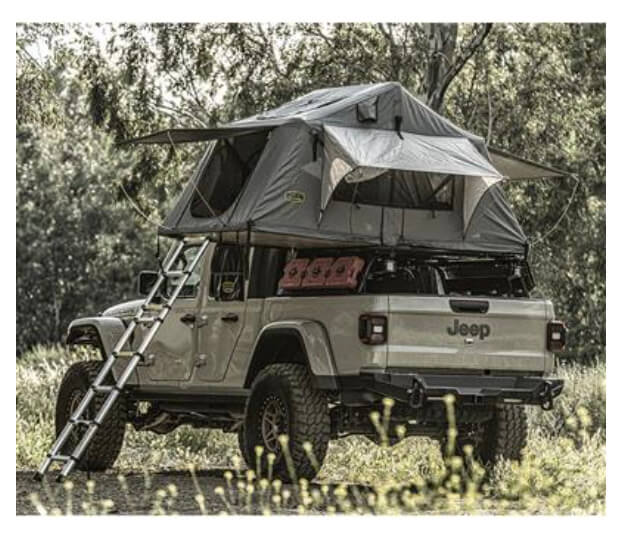
2